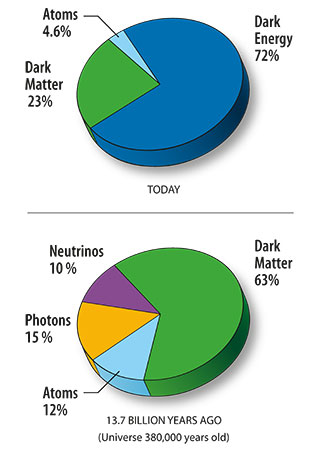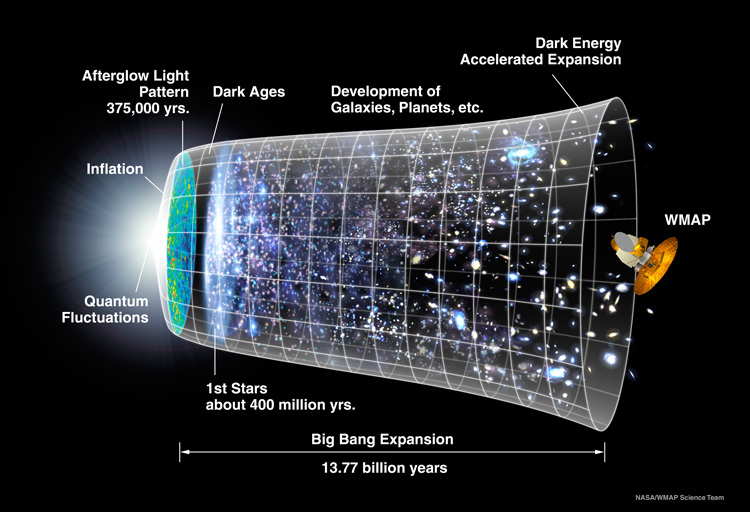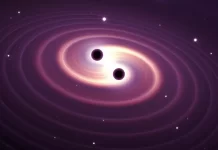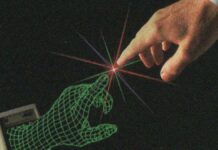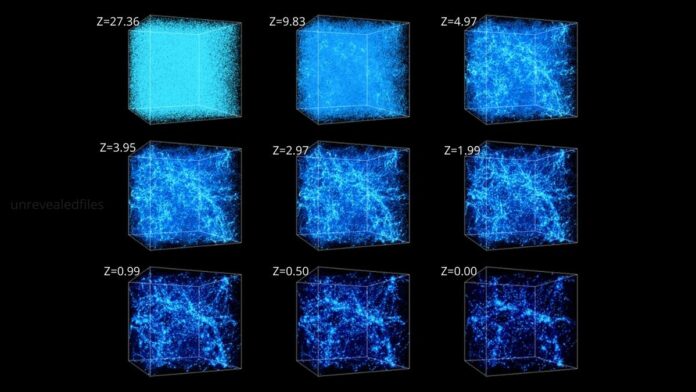
In the currently popular model of the Universe, 70% is thought to be dark energy, 25% dark matter, and 5% normal matter, but the reality is we still do not know much about the universe. While some scientists gave the theory that the universe began with the Big Bang and along with it all types of matter were also formed, some scientists do not believe that the Big Bang is true, but according to all scientists, we still don’t know all about the elements that make up the universe. So, what is the universe’s composition is still a mystery and this is still the biggest challenging question for scientists today.
Contents
Universe’s Composition?
Atoms that form everything around us are only 5%. In the last 80 years, it has become clear that enough of the remaining parts of the universe are made up of two matters which are called Dark matter and Dark energy. It was revealed in 1998 that these matters give more momentum to the expansion of the universe. Astronomers have now started to identify these unseen interlopers correctly. Most dark matter is thought to be non-baryonic and may be composed of some as-yet-undiscovered subatomic particles.
Over the history of the universe, the proportions of all types of matter and energy have changed. In the past 2 billion years, the total amount of electromagnetic radiation generated within the universe has decreased by 1/2. Nowadays, ordinary matter, which includes atoms, stars, galaxies, and life, accounts for only 4.9% of the content of the Universe. The present overall density of this type of matter is very low, roughly 4.5×10−31 grams per cubic centimeter, corresponding to a density of the order of only one proton for every four cubic meters of volume. The nature of both dark energy and dark matter is unknown. Dark matter, a mysterious form of matter that has not yet been identified, accounts for 26.8% of the cosmic content. Dark energy, which is the energy of space and is causing the expansion of the universe to accelerate, accounts for the remaining 68.3% of the content. You can see this data in the pictures below.
In Figure 2: WMAP data reveals that the universe’s content includes 4.6% of atoms, the building blocks of stars and planets. Dark matter comprises 23% of the universe. This matter, different from atoms, does not emit or absorb light. It has only been detected indirectly by its gravity. 72% of the universe is composed of “dark energy”, which acts as a sort of anti-gravity. This energy, distinct from dark matter, is responsible for the present-day acceleration of universal expansion. WMAP data is accurate to two digits, so the total of these numbers is not 100%. This reflects the current limits of WMAP’s ability to define Dark Matter and Dark Energy. This graph will continue to change slightly as better and better data is collected. This image is made with 5-year WMAP data. The final 9-year data produces a more accurate result.
Figure 3: Timeline of the universe showing the evolution and expansion of the universe over 13.77 billion years. The far left depicts the earliest moment we can now probe when a period of “inflation” produced a burst of exponential growth in the universe. (Size is depicted by the vertical extent of the grid in this graphic.) For the next several billion years, the expansion of the universe gradually slowed down as the matter in the universe pulled on itself via gravity. More recently, the expansion has begun to speed up again as the repulsive effects of dark energy have come to dominate the expansion of the universe. The afterglow light seen by WMAP was emitted about 375,000 years after inflation and has traversed the galaxy largely unimpeded since then. The conditions of earlier times are imprinted on this light; it also forms a backlight for later universe developments.
Most scientists claim that the universe is composed almost completely of dark energy, dark matter, and ordinary matter. Other contents are electromagnetic radiation (estimated to constitute from 0.005% to close to 0.01% of the total mass energy of the universe) and antimatter. However there are still many others who have different theories about the composition of the universe.
Thus, in the last 40 years, astronomers have faced a dilemma. Because they tried to determine the building blocks of the universe. Before that, he thought that there was something common in the universe – the same baryonic matter that we can see. Look through the telescope into the universe, and things like that seem obvious. But then the discovery of dark matter and dark energy surprised everyone.
Dark Matter and Dark energy
The existence of Dark Matter and Dark energy is still being debated by theologians and theoretical physicists. In June 2001, NASA launched the Wilkinson Microwave Anisotropy Probe, or WMAP, where the devices took the most detailed picture of the cosmic microwave background as “bizarre radiation emanating from the Big Bang. It allowed scientists to measure the accuracy, density, and composition of the universe Enabling. Here is what WMAP determined: Baryonic matter makes up only 4.6 percent of the universe and Dark matter Part F of 23 percent and “72% of Dark Energy.
Measuring the relative proportions of the building blocks of the universe is just the beginning, and now hoping to identify potential candidates for Dark matter. He considers the Brown dwarf an admirable candidate. Brown dwarfs are objects in the universe like stars, but their intense gravity, which affects nearby objects, provides clues about their existence and location. Supermassive black holes also account for matter deep in the universe. Scientists have speculated that these cosmic sinkholes may power distant quasars and be more abundant than they ever imagined.
Finally, Dark matter may not include a type of particle not yet described. These tiny bits of matter are somewhere deep in an atom and can be detected in one of the world’s super-colliders, such as the Large Hadron Collider.
Is the universe made up of billions of galaxies?
According to modern scientific data, there are billions of galaxies in the entire universe, each filled with billions of stars, some of which contain elliptical orbits of stars, planets, and their moons and that can be detected. In between those large, spherical bodies are irregularly shaped objects, ranging from giant asteroids to rock-shaped meteors, to smaller particles than grains of dust. Astronomers classify all of these as baryonic matter, and we know the most fundamental unit of this is an atom, which itself is made up of small subatomic particles such as protons, neutrons, and electrons.
To know what the universe is made of, from the 1970s onwards, scientists started collecting evidence that we can compare the universe with our own eyes or not (Friends, seeing with eyes here means that all those The use of machines and equipment that humans have made). And then one of the biggest clues came when scientists tried to find “Aliens” on other houses in the galaxies.
Scientists did this by measuring the acceleration of clouds orbiting the galaxy’s outer edges, enabling them to calculate the correct mass to cause that acceleration. What he found was surprising. The mass behind the orbital acceleration of the galaxy’s clouds was five times larger than the common mass, which could be explained by studying the stars and gas circulating in the galaxies. He noticed that there is some invisible material around the galaxy, which holds the entire universe together. They named it ‘physical dark matter’. And thus found the basis for the term used by Swiss astronomer Fritz Zwicky in the 1930s.
Type Ia supernova
20 years later, scientists noticed that the Type Ia supernova, “dying stars, all others, are the same intrinsic radiance” and that is becoming distant from our galaxy. Explaining this observation, they explained that the expansion of the universe is indeed fast and that the acceleration of the universe is indeed terrible because the underlying gravity in the dark matter must have been strong enough to prevent such expansion. Will some other material, with some antigravity effect, lead to a faster expansion of the universe? well, Scientists believed so, and they called the material “dark matters”.
Conclusion
What material is the universe made of? Solving this mystery is one of science’s top priorities. Until the solution comes, we have to live with the thinking that what we have been trying to know for a few years is heavier than us and is full of more problems beyond our comprehension. But still, humans overcome all kinds of troubles and one day we will find answers to this question. You can learn more about the Universe by reading this book: Astronomy For Beginners.
Sources
- “Physics – for the 21st Century”. www.learner.org. Harvard-Smithsonian Center for Astrophysics Annenberg Learner.
- “Dark matter – A history shaped by dark force”. Timothy Ferris. National Geographic. 2015.
- “First Planck results: the universe is still weird and interesting”. Matthew Francis. Ars Technica. March 21, 2013.
- NASA/WMAP Science Team (January 24, 2014). “Universe 101: What is the Universe Made Of?”. NASA.
- “Two Trillion Galaxies, at the Very Least”. The New York Times.
- “How Many Stars Are There In The Universe?”. European Space Agency. “Unveiling the Secret of a Virgo Dwarf Galaxy”. European Southern Observatory Press Release. ESO: 12. May 3, 2000. Bibcode:2000eso..pres…12.
- “Hubble’s Largest Galaxy Portrait Offers a New High-Definition View”. NASA. February 28, 2006.
- Gibney, Elizabeth (September 3, 2014). “Earth’s new address: ‘Solar System, Milky Way, Laniakea'”. Nature. DOI:10.1038/nature.2014.15819.
- “Local Group”. Fraser Cain. Universe Today. May 4, 2009. Archived from the original.
FACT CHECK: We strive for accuracy and fairness. But if you see something that doesn’t look right, please Contact us.
DISCLOSURE: This Article may contain affiliate links and Sponsored ads, to know more please read our Privacy Policy.
Stay Updated: Follow our WhatsApp Channel and Telegram Channel.
